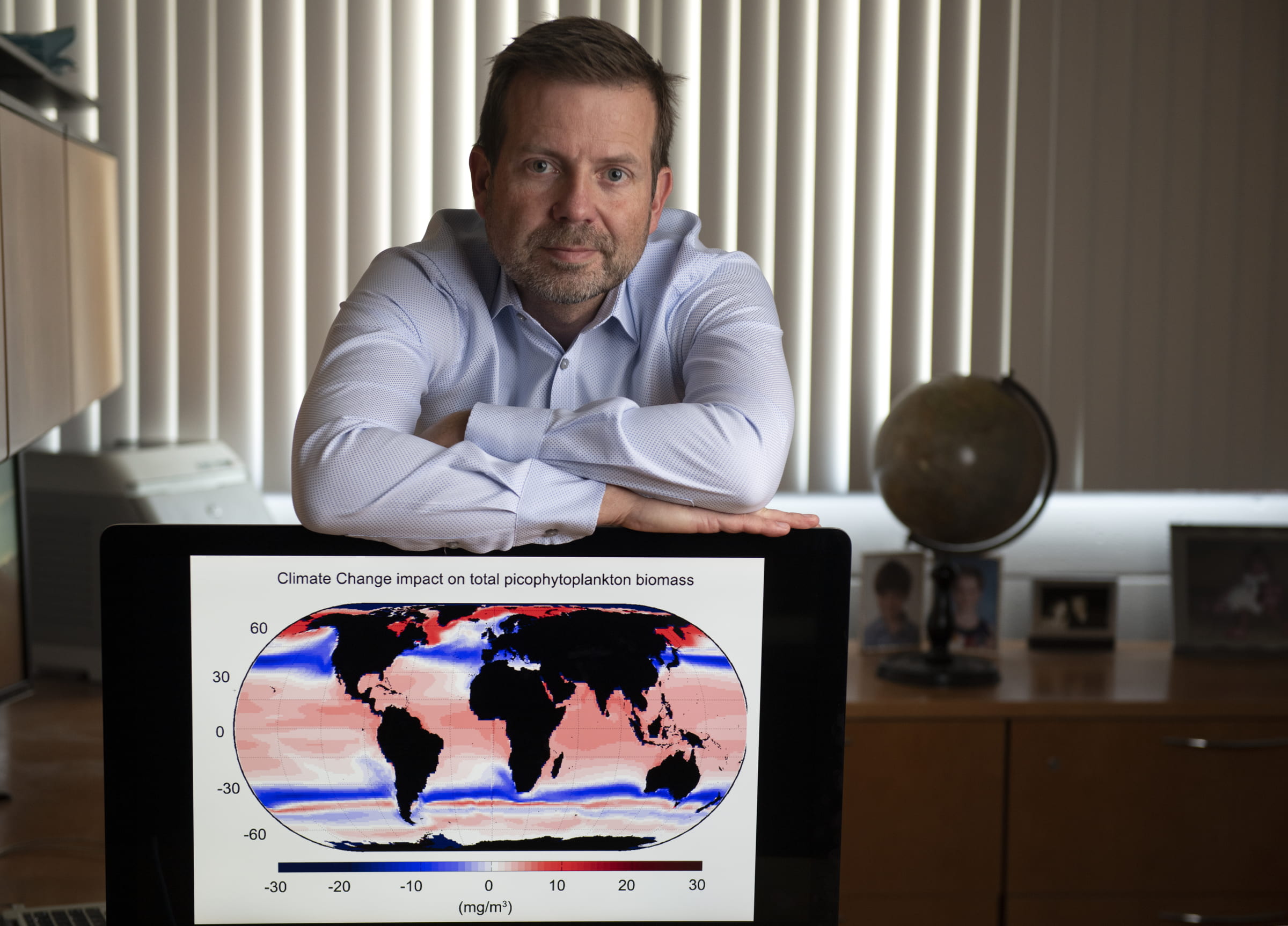Contradicting prevalent view, UCI oceanographers predict increase in phytoplankton
Machine learning Earth system model projects growth in lower latitudes by 2100

Irvine, Calif., Jan. 27, 2020 – A neural network-driven Earth system model has led University of California, Irvine oceanographers to a surprising conclusion: Phytoplankton populations in low-latitude waters will expand by the end of the 21st century.
The unexpected simulation outcome runs counter to the longstanding belief by many in the environmental science community that global climate change will make tropical oceans inhospitable to phytoplankton, which form the base of the aquatic food web. The UCI researchers provide the evidence for their findings in a paper published today in Nature Geoscience.
Senior author Adam Martiny, UCI professor of Earth system science and ecology & evolutionary biology, explained that the prevalent thinking on phytoplankton biomass stems from the expectation of an increasingly stratified ocean. Warming seas inhibit mixing of the heavier cold layer in the deep with lighter warm water closer to the surface. With less circulation between the levels, fewer nutrients reach the higher strata to be accessed by hungry plankton.
“All the climate models have this mechanism built into them, and it has led to these well-established predictions that phytoplankton productivity, biomass and export into the deep ocean will all decline with climate change,” Martiny said. “Earth system models are largely based upon laboratory studies of phytoplankton, but, of course, laboratory studies of plankton are not the real ocean.”
Scientists traditionally account for plankton by measuring the amount of chlorophyll in the water, he said. And there is considerably less of the green stuff in low-latitude regions that are very hot compared to cooler regions farther away from the equator.
“The problem is that chlorophyll is not everything that’s in a cell, and actually, in low latitudes, many plankton are characterized as having a very small amount of it. There’s so much sunlight that plankton only need a few chlorophyll molecules to get enough energy to grow,” Martiny said. “In reality, we have so far had very little data to demonstrate whether there is more or less biomass in regions undergoing stratification. As a result, the empirical basis for less biomass in warmer areas is not that strong.”
These doubts led him and his UCI colleagues to conduct their own phytoplankton census. Analyzing samples from more than 10,000 locations around the world, the team created a global synthesis of the main phytoplankton groups in warm regions.
The vast majority of these species are very tiny cells known as picophytoplankton. Ten times smaller in diameter than the strains of plankton off the California coast – and 1,000 times less voluminous – picophytoplankton are nonetheless great in number, making up 80 to 90 percent of plankton biomass in most warm areas.
The researchers built global maps and compared the quantity of biomass along the gradient of temperature, a key parameter, according to Martiny. Conducting a machine learning analysis to determine the amount now versus in the year 2100, they found a big surprise: “In many regions, there would be an increase of 10 to 20 percent in plankton biomass, rather than a decline,” Martiny said.
“Machine learning is not biased by the human mind,” he noted. “We just give the model tons and tons of data. But these sorts of artificial intelligence tools can help us challenge existing paradigms.”
One of the theories the team explored to explain the growth – with help from co-author Francois Primeau, UCI professor of Earth system science – had to do with what happens to phytoplankton at the end of their life cycle.
“When plankton die – especially these small species – they sit around for a while longer. And maybe at higher temperatures, living plankton can more easily degrade them and recycle the nutrients back to build new biomass,” Martiny said.
Such ecosystem features are not easily taken into account by traditional, mechanistic Earth system models, he said, but they were part of the geographically diverse dataset the group used to train its neural network-derived quantitative niche model.
Martiny said that this study, following up research published last summer, is further evidence of the variability and resilience of phytoplankton.
“We could, obviously, let climate change get out of hand and go into completely uncharted territory, and then all bets are off,” he said. “But at least for a while, I think the adaptive capabilities in these diverse plankton communities will help them maintain high biomass despite these environmental changes.”
Joining Martiny and Primeau were lead author Pedro Flombaum, a former postdoctoral researcher and, later, a visiting scholar in Earth system science at UCI who’s currently an associate professor at Argentina’s University of Buenos Aires; and co-author Weilei Wang, a UCI postdoctoral scholar in Earth system science. The work received support from the National Science Foundation’s 10 Big Ideas program and the U.S. Department of Energy’s Office of Biological and Environmental Research.
About the University of California, Irvine: Founded in 1965, UCI is the youngest member of the prestigious Association of American Universities. The campus has produced three Nobel laureates and is known for its academic achievement, premier research, innovation and anteater mascot. Led by Chancellor Howard Gillman, UCI has more than 36,000 students and offers 222 degree programs. It’s located in one of the world’s safest and most economically vibrant communities and is Orange County’s second-largest employer, contributing $5 billion annually to the local economy. For more on UCI, visit www.uci.edu.
Media access: Radio programs/stations may, for a fee, use an on-campus ISDN line to interview UCI faculty and experts, subject to availability and university approval. For more UCI news, visit wp.communications.uci.edu. Additional resources for journalists may be found at communications.uci.edu/for-journalists.


